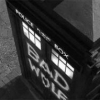Περί φωτογραφικών μηχανών, φακών και λοιπών αξεσουάρ
-
Similar Content
-
Το DPReview.com εξαγοράστηκε από το Gear Patrol!
By Cyber_Cookie,
- dpreview
- gearpatrol
- (και 2 επιπλέον)
- 0 comments
- 765 views
-
Η παραγωγή μικρού μεγέθους ψηφιακών φωτογραφικών μηχανών σταματάει, λόγω των κινητών τηλεφώνων 1 2
By astrolabos,
- 14 comments
- 1.254 views
-
- 0 comments
- 2.499 views
-
- 0 comments
- 1.222 views
-
- 8 comments
- 3.530 views
-





Recommended Posts